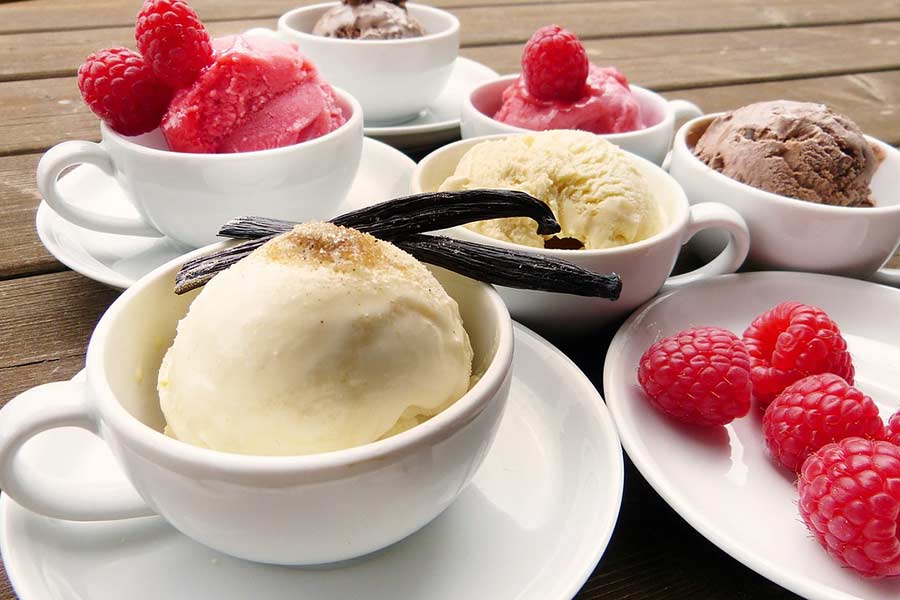Madagascar, Tahitian or Mexican? Different Vanilla Types Explained

Vanilla is one of the most exotic ingredients in the world. Based on its quality and the process that it undergoes before arriving on supermarket shelves, vanilla can be quite expensive—a price many people are willing to pay to ensure they’re getting a quality product that’s made ethically. Where does vanilla come from, and how does it come to be the dark, intensely flavorful extract we’re all familiar with? Today, we’ll take a look at the origins of different types of vanilla extracts and discuss how these origins might affect the final product.
The Process
Vanilla is derived from a string-bean-like pod of a climbing orchid whose greenish-white flower blossom very briefly. By nature, these flowers can only blossom for a single day out of the year, which means that everything must be done on a schedule. The beans take six months to mature after hand pollination, but they must be given several more months after maturity to allow for proper ripening.
The beans are then harvested and submerged briefly in scalding hot water to halt their ripening. With the use of blankets, sweating boxes, and ovens, the beans are dried and processed before they are allowed to dry in open air for an additional six to nine months to bring the moisture content down to 30%. The famous aroma and taste develop as the beans ferment.
The Varieties
It’s not uncommon to see all kinds of different vanilla extracts on store shelves, but what mostly sets one apart from another is the variation in the way that vanilla extract is produced. The quality, price, and unique attributes of a vanilla extract come from the grade of vanilla beans used, type of alcohol, and temperature of extraction, among others things. These all play a significant role in bringing out the best qualities of vanilla beans.
While there are countless varieties of vanilla grown and processed globally, the most common ones you’ll see in a U.S. supermarket are:
- Mexican Vanilla
- Madagascar Vanilla
- Tahitian vanilla
Mexican vanilla
This product is made from hand-selected beans that are cultivated in Mexico, the original birthplace of vanilla. After nine months, the flower dies, and the vanilla is harvested by removing the green seed pod from the plant. The pod is allowed to undergo 20 days of drying before undergoing the fermentation process. Using wooden boxes that are covered with palm rugs, the vanilla pods are allowed to ripen before they are stored in a vacuum packaging. This process gives the end product a unique flavor that is noticeably different from other vanilla extracts.
Madagascar vanilla
Madagascar vanilla has the same basic taste as Mexican vanilla, as they both come from the same plant. The difference is that in Madagascar, the pollination is done by bees rather than human hands. Madagascar vanilla traces its roots back to 1800, where the orchard was introduced to Madagascar from Mexico. The product is also referred to as Bourbon vanilla, but it is not made with bourbon whiskey. The bourbon name is derived from the region where the vanilla was traditionally grown. Madagascar supplies two-thirds of the world’s vanilla consumption, making it by far the most common and popular variety.
Tahitian Vanilla
Tahiti is an island on the Pacific Ocean where vanilla production is done on a large scale. The country’s tropical climate and soil go a long way towards influencing Tahitian vanilla’s unique flavor, and Tahiti is often referred to as a “vanilla island” because so much of the country’s land is dedicated to growing the orchard. Despite this moniker, however, the production of vanilla in Tahiti contributes to a mere 1% of the world’s vanilla.
Tahitian vanilla is derived from a natural hybrid between bourbon vanilla and Vanilla Odorata, a very scarce species that is only found in Belize and Guatemala forests. Tahitian vanilla is fertilized by hand before undergoing nine months of fermentation and drying. It is then packaged in a vacuum without the presence of light—an important step that helps give Tahitian vanilla its famously unique flavor.
Vanilla products from the above sources are some of the best in the world. If you can find them, give all three a try to explore each of their uniquely complex flavors. You may be surprised by the extent to which a vanilla extract’s origin can influence its flavor!
Comments
Post a Comment